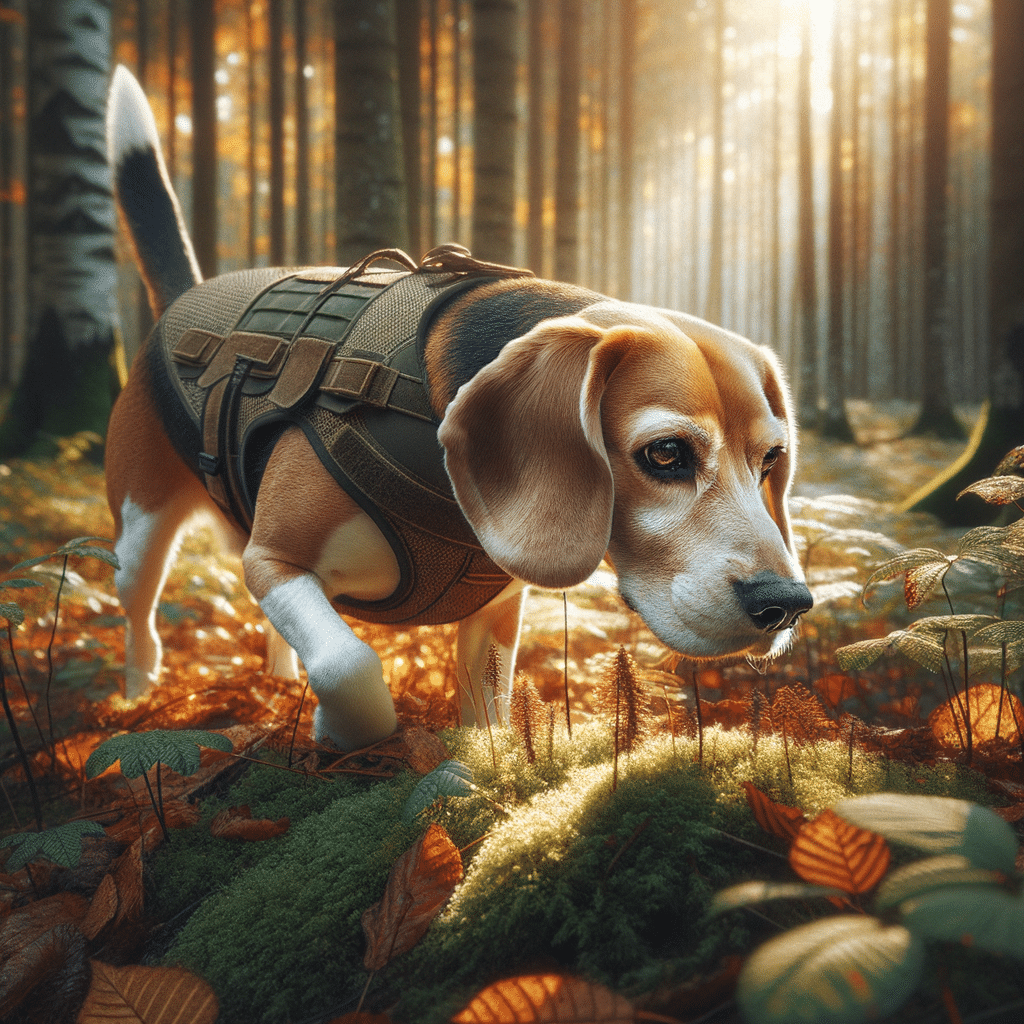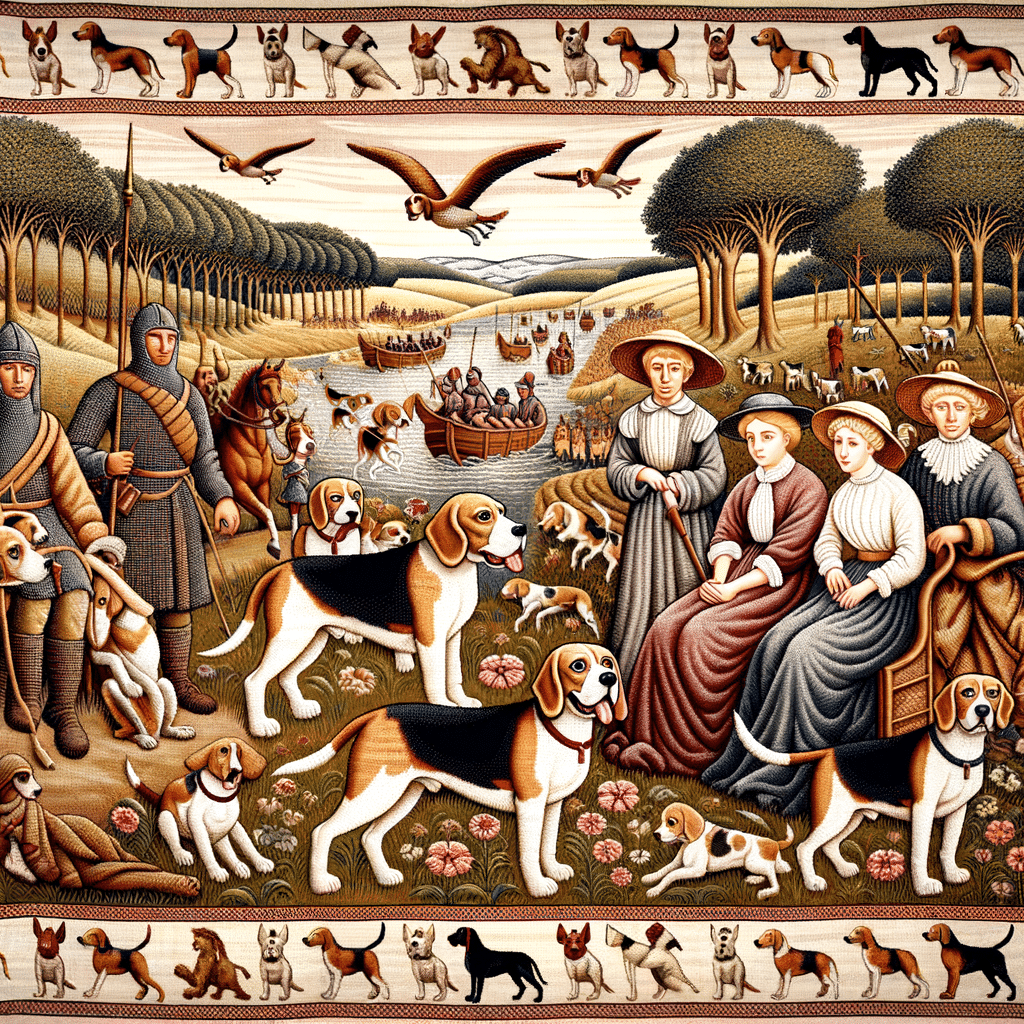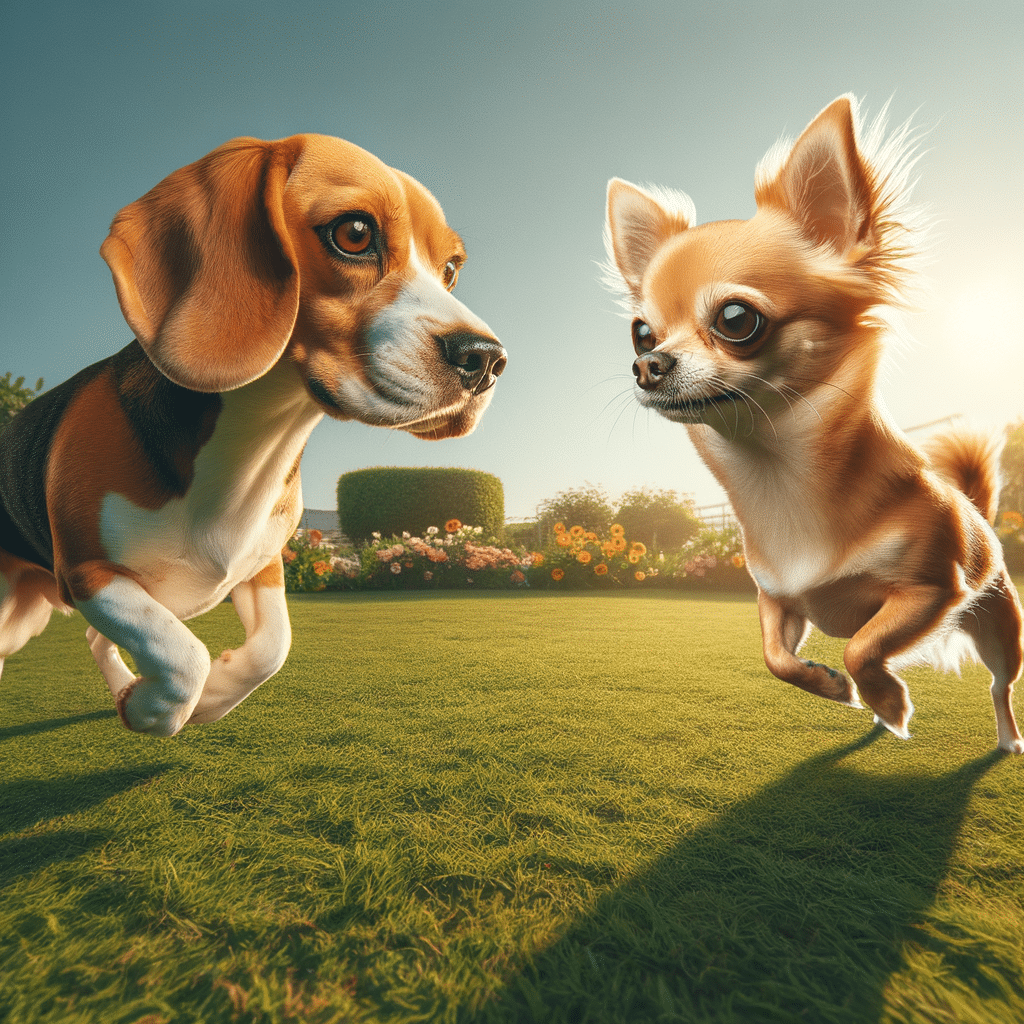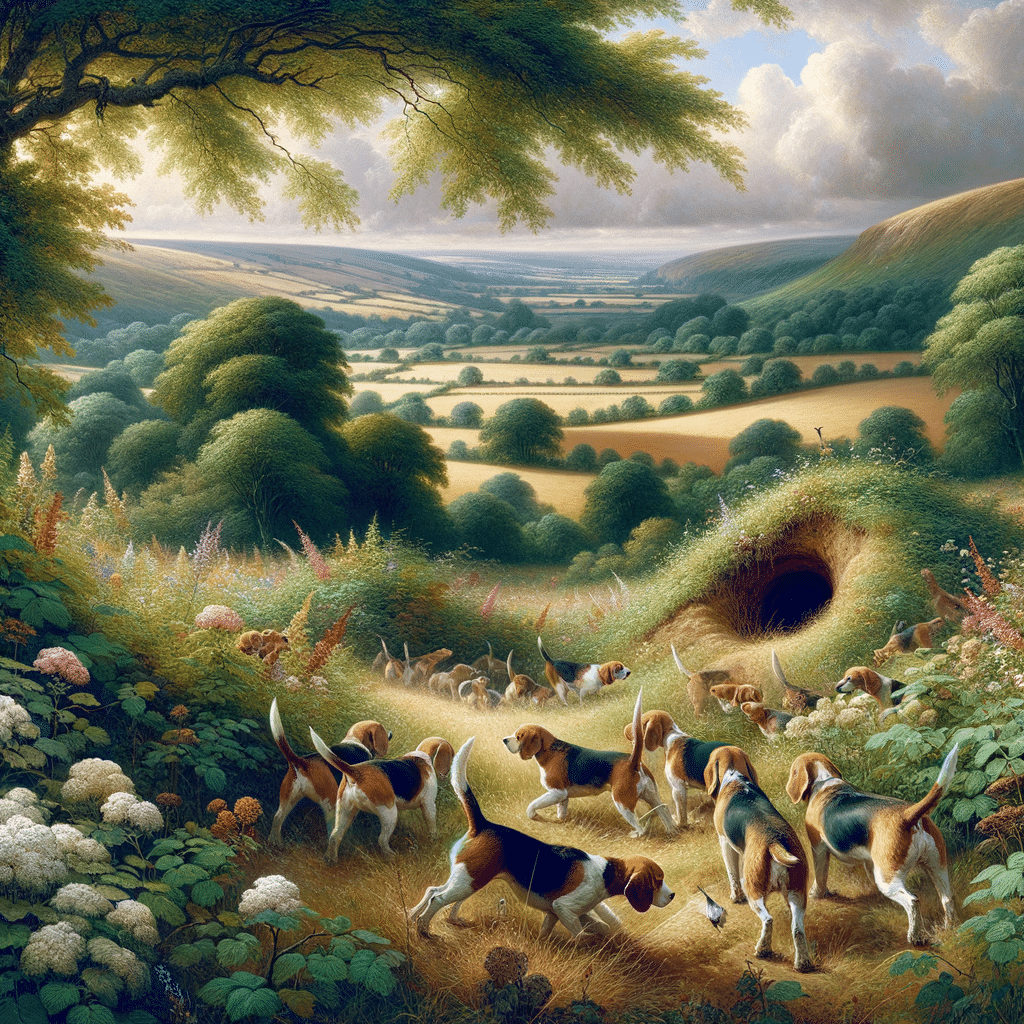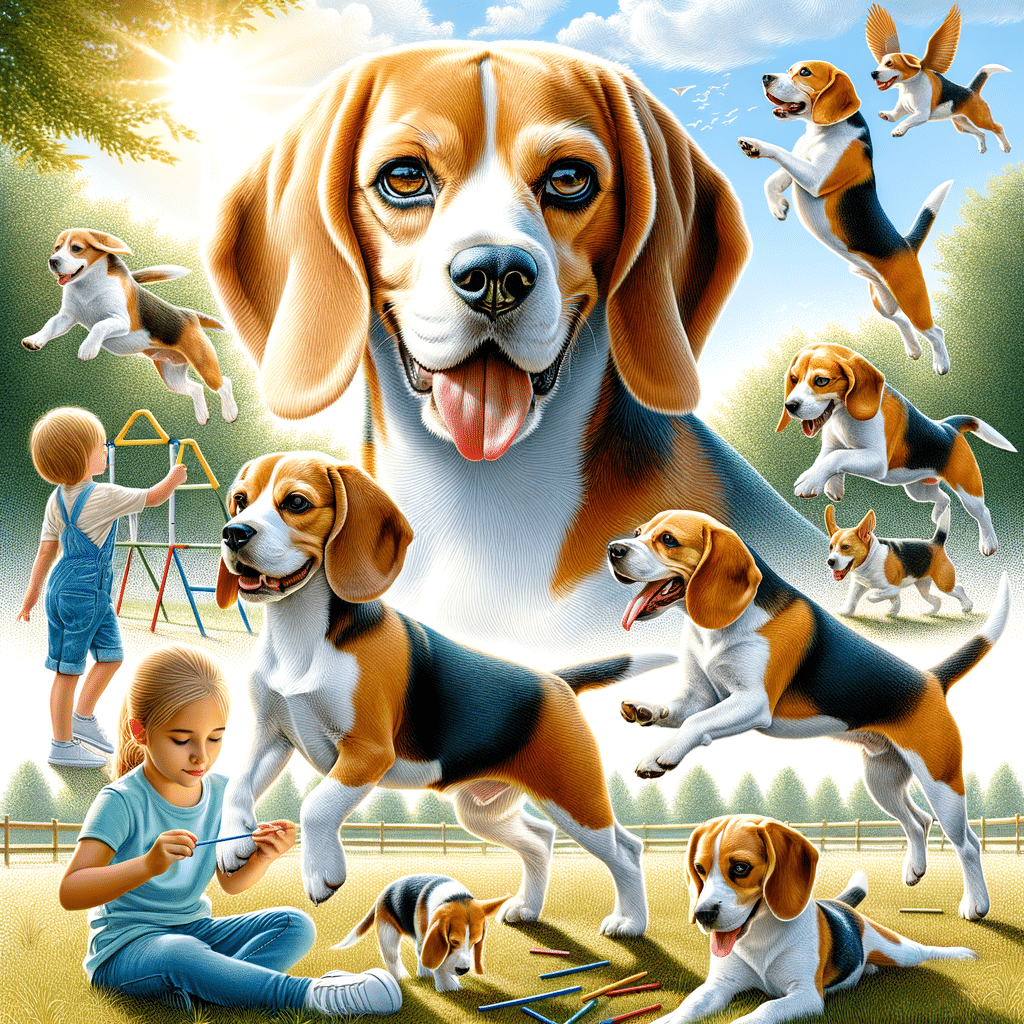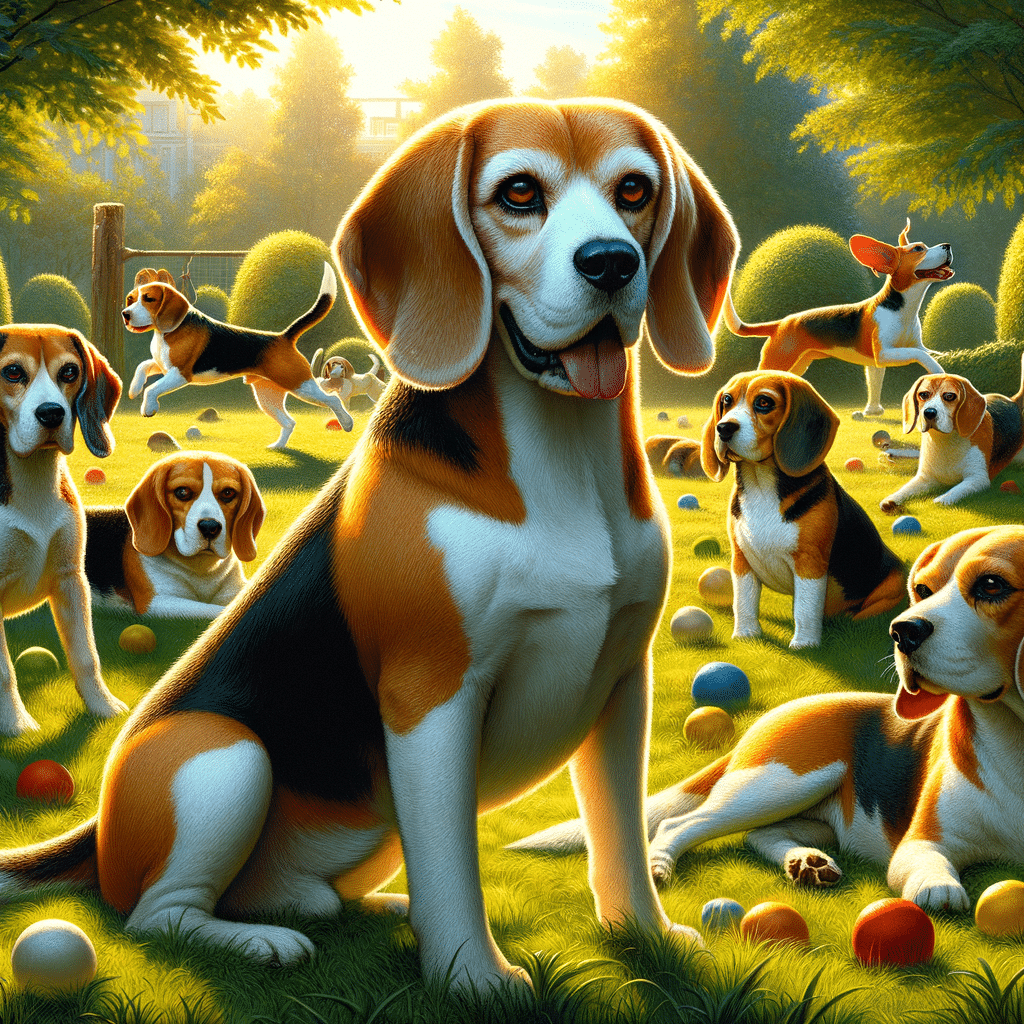Beagles are a popular breed known for their keen sense of smell and friendly disposition. Originally bred for hunting, they have evolved to become one of the most beloved household pets today. Their history traces back to ancient times, and over the centuries, they have been employed for various tasks that take advantage of their superior olfactory skills.
In This Article
Distinct in their appearance, beagles are small to medium-sized dogs boasting a hardy build and a variety of coat colors, including the familiar tri-color. They exhibit a curious and merry temperament, which makes them a great fit for families. Known to be excellent with children, they are playful companions yet may exhibit a stubborn streak, which can be addressed with consistent training.
In the workforce, beagles have a widespread reputation as detection dogs due to their powerful nose, widely used in roles such as contraband detection at borders and in airports. Their presence in society is not limited to hunting and work; they also make their mark in pop culture and have raised awareness for various animal welfare issues.
Highlights
- Beagles have a storied history as hunting dogs with a remarkable sense of smell.
- They are identifiable by their compact size and diverse coat patterns.
- Their adaptability has made them a fixture in family homes and various work environments.
Breed History and Origin
The beagle breed has a rich history that spans continents and centuries, with deep-seated roots in ancient hunting traditions. This section delves into the development of the beagle from its early ancestors to its establishment in America.
Early Ancestry and Development
The origins of the beagle can be traced back to Ancient Greece, where hound-like dogs were used for hunting. By the 8th century, a scent hound known as the St. Hubert Hound played a significant role in the breed’s lineage. However, the beagle, as known today, has strong ties to England, where various hound breeds were mixed to create the perfect hunting companion for small game like rabbits and hares.
Experts believe the Talbot hound, a now-extinct breed, had a substantial influence on the beagle’s early development. Known for its keen scenting ability, the Talbot was used to track large game. The beagle thrived in England, well-suited for fox hunting. Over time, selective breeding refined the breed’s traits, embracing the beagle’s compact size and remarkable nose.
- Known for their stamina and scenting prowess.
- Commonly associated with rabbit and hare hunting.
Beagles in America
Beagles crossed the Atlantic, establishing themselves firmly in American society. They became favored by many, including President Lyndon Johnson, who owned beagles named Him and Her.
In America, the beagle was often larger, a result of mixing with the foxhound to enhance its hunting abilities. But it was Queen Elizabeth who made the smaller version of the beagle popular, known as the pocket beagle, which hunters could carry in their saddlebags.
The breed’s popularity in the United States continued to grow due to its versatility as both a hunting dog and a family companion. Societies and clubs formed around the affection for beagles, such as the American Kennel Club (AKC), which first recognized the breed in 1885.
These are the key events in the evolution and spread of the beagle, underlining the breed’s historical significance and enduring appeal.
Physical Characteristics
Beagles are a distinctive breed known for their moderate size and remarkable coat patterns. This section examines the breed’s size, weight, and the variety of coat colors and textures that beagles can exhibit.
Size and Weight
Beagles come in two primary size varieties:
- Under 13 inches at the shoulder
- 13 to 15 inches at the shoulder
Typically, they weigh between 20 to 25 pounds, giving them a sturdy but mid-size build.
Coat Colors and Patterns
Beagles display a range of coat colors and combinations, with some common patterns outlined below:
- Tricolor: A mix of black, white, and tan
- Reddish brown and pale lemon: Variations that may appear within the breed
In addition to color variety, beagles can also have:
- Ticking or freckles
- Short, smooth coats that are easy to maintain
A notable feature of beagles is their white-tipped tail, which enhances visibility while hunting. Their long, floppy ears serve more than a cute feature; they help to channel scents directly to their nose, which is beneficial to their role as scent hounds.
Behavior and Temperament
Beagles are known for their friendly and gentle disposition, coupled with a strong sense of smell that often drives their behavior. They are intelligent and energetic hounds that thrive on company and activity.
Personality Traits
Beagles exhibit a range of personality traits that make them well-loved family pets. They tend to be:
- Friendly: They generally get along with other pets and children.
- Playful: An innate playfulness makes them fun companions.
- Intelligent: Beagles are smart, which can make them both trainable and mischievously clever.
- Social: These dogs prefer not to be alone and can become distressed if left isolated.
- Energetic: Beagles require regular exercise to match their energy levels.
Their acute sense of smell often leads them, which can sometimes cause a bit of mischief as they follow interesting scents.
Beagle Vocalizations
When it comes to vocalizations, beagles are quite expressive:
- Vocal: Beagles are known to communicate with a range of sounds.
- Baying: This loud and deep howl is a typical hound characteristic, often used when they are on the trail of a scent.
- Howling: Beagles may howl when left alone or to alert their owners.
- Distinct Vocalizations: They have a unique vocal range, from barking to a more musical yodel-like sound when excited.
Their vocal nature requires understanding and sometimes training to manage, especially in quiet environments.
Care and Keeping
Caring for a beagle involves a dedicated routine that addresses their physical and mental health needs. Proper exercise, training, and awareness of potential health challenges are essential for a beagle’s well-being.
Health and Wellness
Beagles are generally hardy dogs, but they can be prone to certain health problems. One of the most common issues is obesity.
To prevent weight gain, owners should monitor their beagle’s diet carefully and provide:
- A balanced diet with appropriate portion sizes
- Regular health check-ups with a veterinarian
- Dental care, including brushing teeth and professional cleanings
Owners should also be vigilant for signs of inherited conditions such as epilepsy, hip dysplasia, and hypothyroidism.
Exercise and Training
Regular exercise is vital for a beagle’s health.
They require:
- Plenty of exercise daily to maintain fitness and prevent obesity.
- Activities that provide mental stimulation to keep their mind engaged.
When it comes to training, beagles benefit from:
- Early obedience training to instill good habits.
- Positive reinforcement techniques to encourage desired behaviors.
Structured play, scent games, and interactive toys can aid in providing both physical and mental stimulation. Consistency in exercise and training routines will support a beagle’s overall health and happiness. Regular grooming practices, such as brushing their coat, checking their ears, and nail trimming, are also important to maintain their well-being.
Beagles in Work and Society
Beagles have a profound impact on work and society, primarily due to their acute sense of smell and tractable nature. This section explores the roles of beagles in traditional hunting and their adaptation to modern specialized tasks.
Hunting and Tracking Abilities
The beagle’s history as a hunting dog is well-documented. Their size, agility, and keen olfactory capabilities make them particularly effective at tracking rabbits and hares. Traditionally, beagles were used for their scenting abilities to follow trails during hunts, a practice dating back to England before spreading worldwide. Their exemplary scent receptors allow them to be relentless in pursuit when hunting small game.
The American Kennel Club classifies beagles as a type of scent hound, indicating their specialized role in detecting and following scents. Historical anecdotes suggest that even smaller versions of the breed, known as pocket beagles, were favored for their hunting prowess.
Modern Day Roles
In contemporary settings, beagles have transitioned into various working dog roles. Notably, the Beagle Brigade, part of the Department of Homeland Security, employs beagles at airports across the US to sniff out agricultural products and prevent the entry of harmful pests and diseases into the country.
Their sense of smell has made them invaluable in other unique applications. For instance, beagles have been trained as bedbug detectors and to detect changes associated with pregnancy in polar bears, showcasing their versatility beyond traditional hunting roles.
Moreover, the breed’s friendly demeanor and sociability have made beagles prominent icons in society. Snoopy, from the “Peanuts” comic strip, is arguably one of the most famous beagles, contributing to the breed’s popularity and recognition. Beagles also have a historical presence in the White House, with President Lyndon Johnson owning beagles during his presidency.
Frequently Asked Questions
In this section, readers will find succinct answers to common inquiries about beagles, from their physical traits to their historical roles and behavioral characteristics.
What are the characteristic traits of a beagle’s appearance?
Beagles are small to medium-sized dogs with a muscular build, a broad head, and large, expressive eyes. They have long, hound-type ears that can reach their nose when pulled forward.
Why might beagles be considered an ideal breed for novice dog owners?
They are friendly, intelligent, and have a mild temperament, which makes them highly trainable and a great choice for first-time dog owners.
What are some essential things to know before adopting a beagle puppy?
Future beagle owners should be prepared for a high-energy dog that needs regular exercise, mental stimulation, and proper training to manage their innate curiosity and tendency to follow their noses.
Is there a variety in coat colors among beagles, and what are the common patterns?
Beagles’ coats are typically tricolor (black, brown, and white), although two colors and other variations exist. They have a short, dense coat that provides protection in all weathers.
